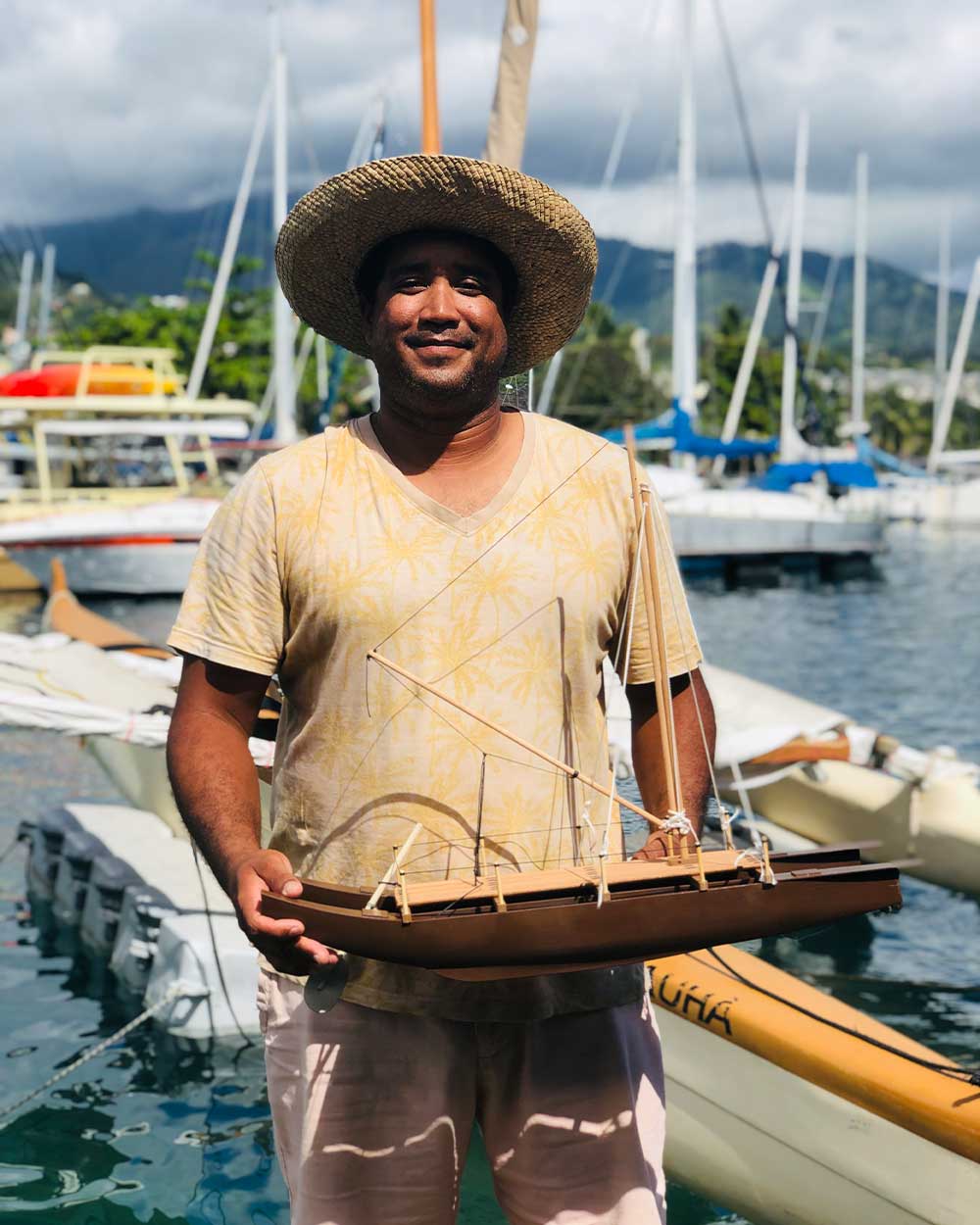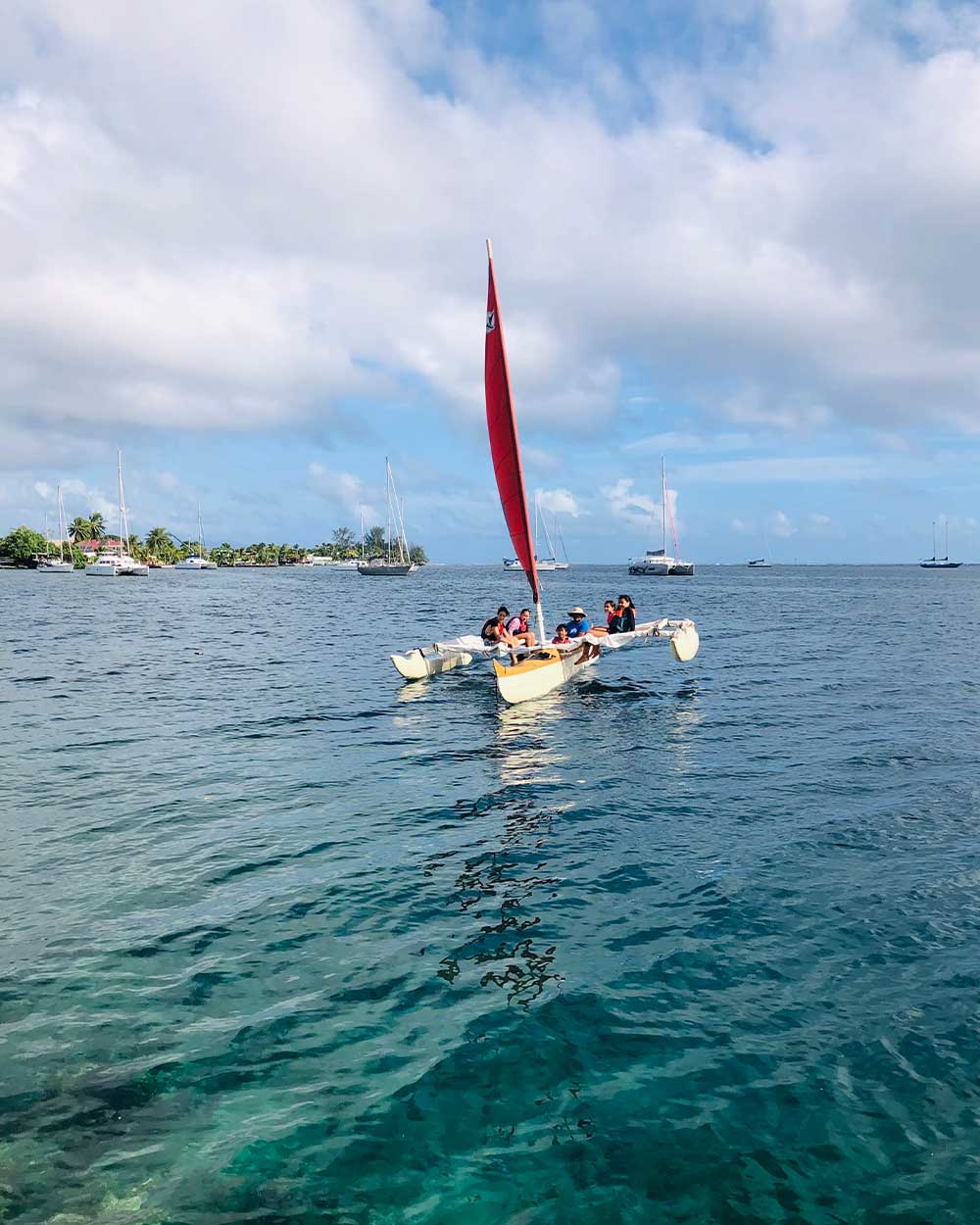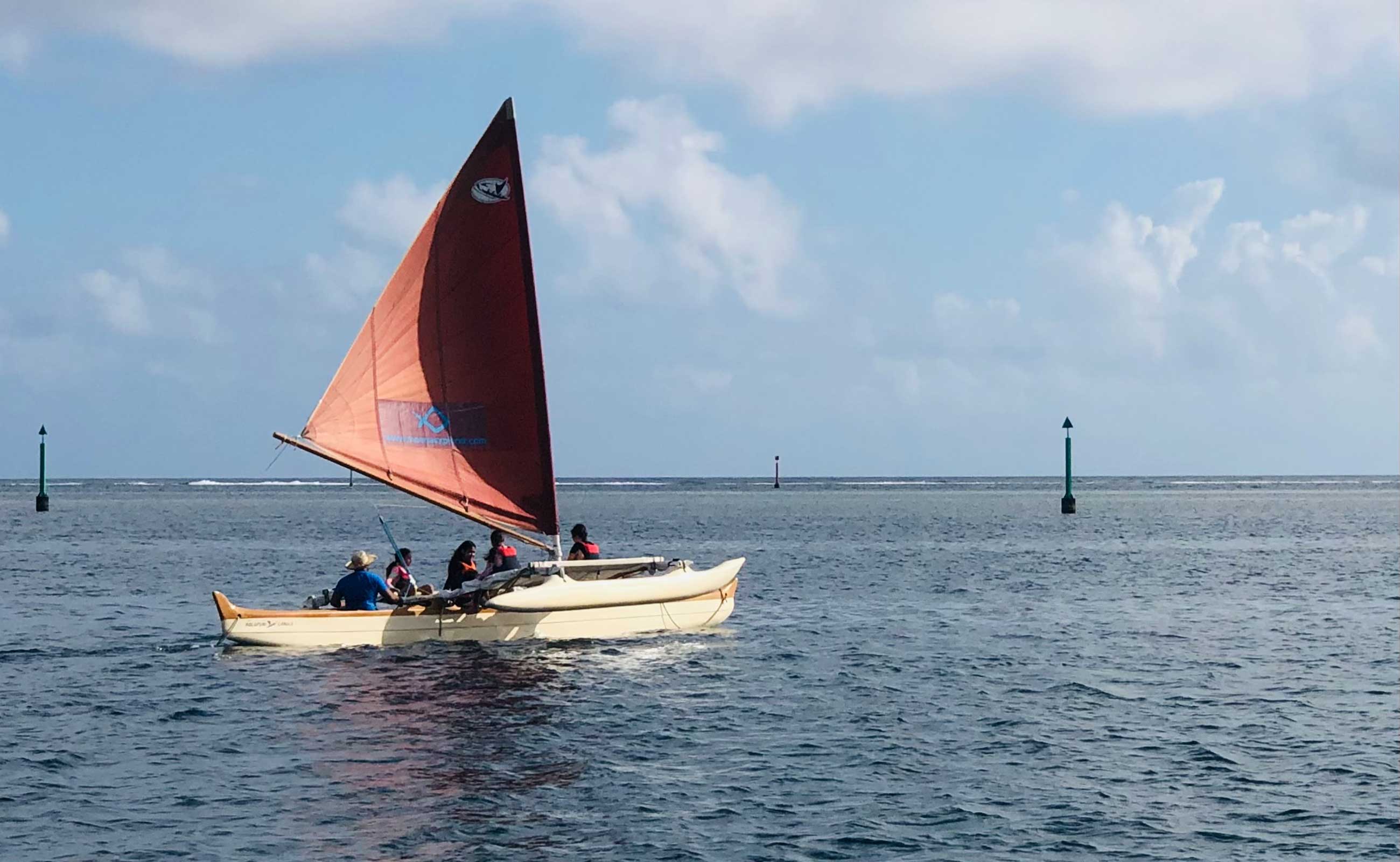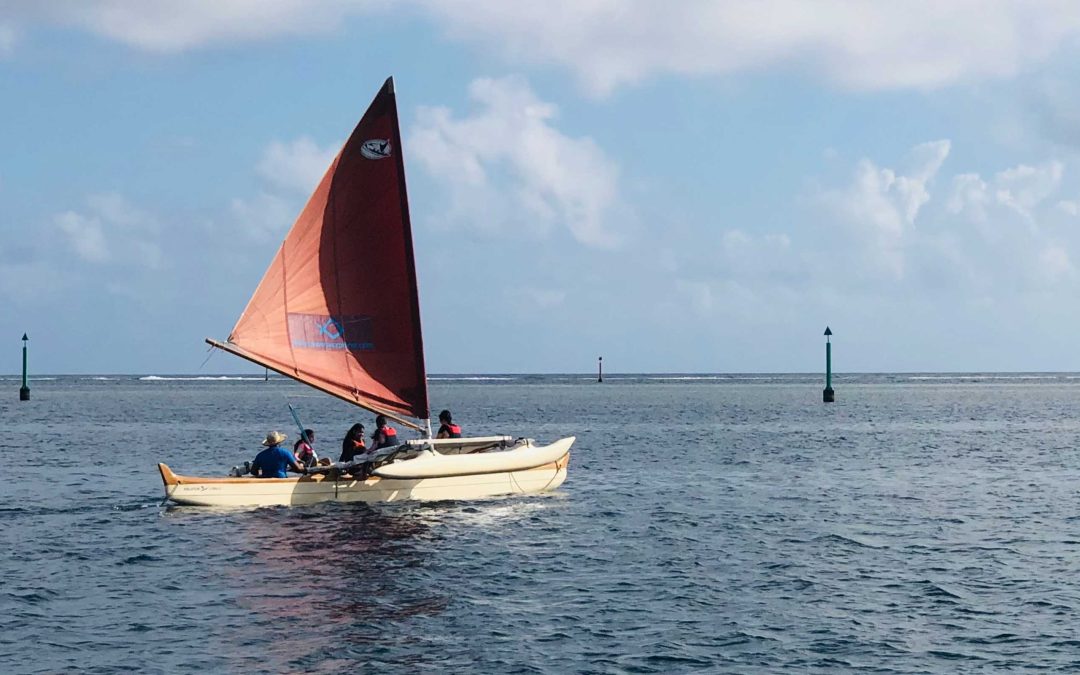Once a member of the French sailing team and a top-level racer, Teiva Véronique-Gatata now dedicates himself to passing on ancestral know-how, driving the revival of traditional sailing in French Polynesia.
If you have found your way here, the chances are you feel the pull of the Pacific. You may be preparing your boat, trimming your sails, checking your equipment, and already setting your sights on the Pacific Puddle Jump in French Polynesia.
Five thousand years ago, the first Polynesians left Taiwan to settle in Melanesia and Polynesia, navigating long distances on large double-hulled pirogues with sails and no instruments. They relied solely on the wind, stars, birds, and ocean swell to find their way.
When Teiva Véronique-Gatata reconnected with his roots, it proved to be a turning point in his life. A former top-level racer and member of the Marseille “Pôle France” from his early teens, he knows everything there is to know about racing Optimists, windsurf boards, and Hobie Cats.
A graduate of the École Nationale de Voile et des Sports Nautiques in Brittany, he was a long-time advisor to the Tahitian Sailing Federation. But in 2015, a defining moment came for Teiva, when he took the helm of the traditional double-hulled pirogue Faafaite, reviving the art of navigation without instruments. And it was life altering. “I knew how to sail fast, but had no idea how my ancestors crossed the ocean without instruments, compasses, or GPS device.”

Passion and transmission
Since then, Teiva has focused on reviving this heritage. He decided to build ten small sailing pirogues, called holopuni, on the Ārue Motu (Tahiti), and founded a school teaching ancestral navigation skills. Every year, “thousands of inquisitive local people and visitors” come on board to test their hand at this forgotten know-how.
Children learn much more than just how to sail. “You’re going to learn to be sailors,” says Teiva to Shaun, Heily, Auhiki and Adele. They are on a sailing course during their school vacation. In just one week, they learn to read the sea, feel the wind, interpret the swell and the stars, and sail alone. All without ever using an instrument.
Teiva’s teaching methods are about more than just learning to sail. They are about reconnecting with the past. “The island of Tahiti was discovered 1,500 years ago. The Polynesians then sailed to Aotearoa (New Zealand), Hawaii, Henua Enata (the Marquesas Islands), and Rapa Nui (Easter Island). For the five learners, each journey aboard a holopuni is a lesson in geography, culture, and ecology,
because traditional sailing also serves as an advocate for the ocean. “When children rely on nature to find their way across the ocean, they stop being spectators and start being actively involved,” Teiva sums up.
Over the centuries, Polynesians have crossed the vast blue ocean with both skill and bravery that command respect. Following in the footsteps of Teiva Véronique-Gatata, we see that sailing is not just about making headway at sea. It is a living link between past and present, between people and the sea. So, when your sailboat crosses the finish line of the Pacific Puddle Jump, perhaps you will look up at the stars and think: “They did it before me and they didn’t need a GPS device.”
How to find your way at sea without instruments
“Our ancestors were experts. We are no worse than them, but we are disconnected from our surroundings. Who still takes the time to watch the stars drift across the night sky? Who pauses to watch the sunrise and sunset? Who notices the direction of the wind, feels its temperature and strength, or observes the clouds?” says Teiva. “When you are attuned to all this, navigation is simple. In the end, the hardest part is reconnecting with it all. When you have done this, interpreting the elements comes easily.”
“At sea, it is all about the swell, waves, and currents. In the air, there is the wind and clouds. When the sun rises or sets, its position on the horizon tells us where we are. Through the night, the way in which sixty key stars rise and fall helps us find our bearings. When a star rises on the horizon, we can measure the angle between it and the course of our sail-propelled pirogue. As we do not have a compass, we use what we call fare which divide the horizon into compartments. So, we know exactly where we are and where we are going. During the day, we estimate our course; at night it is all about accuracy. The height of the stars tells us what our latitude is,” sums up the sailing instructor.



